|
Landscape Painting In Oils
The canvas for my Landscape Painting In Oils is primed with a thin gesso. I use liquin as the thinner. I am going to use greys to establish the tones. I didn't produce any preparatory drawings or colour studies. You may think this a mistake but it is a really good exercise in using colour. Follow my progress and think of each stage as oil painting instructions when you produce your own version. 1, My goal is to produce a balance between a dramatic sky and a rolling landscape. I draw the main contours and two small figures I hope will give the painting scale. The figures are taken from a photograph.
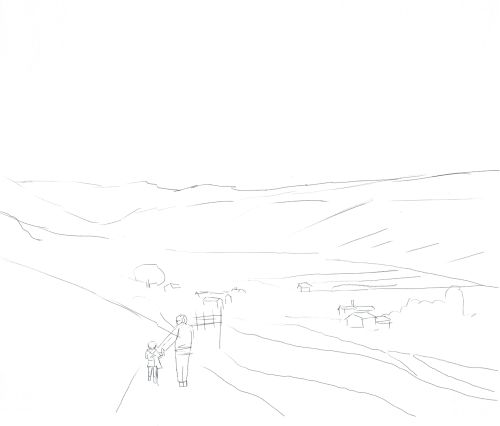
2, I block in the darkest areas using black and titanium white.
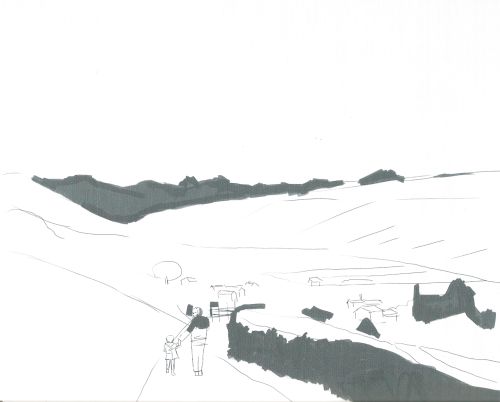
3, I work my way over the land deciding where I want darks and lights. I vaguely decide where buildings and fields lay and the odd tree.
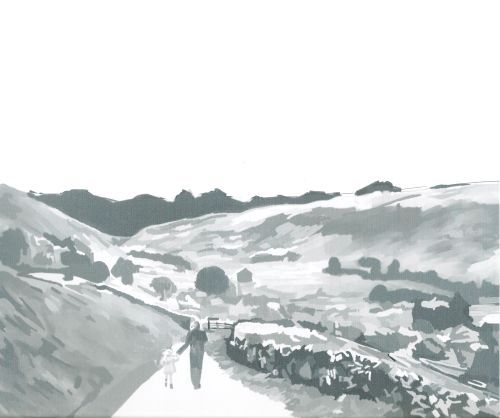
4, I daub the sky with little planning. I favour one side with light. Painting clouds is a source of frustration for many but the fluidity of the sky actually makes it easy. A painting of a dog (if it's representational) must have the correct amount of legs, a snout and a hundred other little details to fool the eye but a cloud? It can have any shape, reflects any number of colours, can be transparent or opaque.
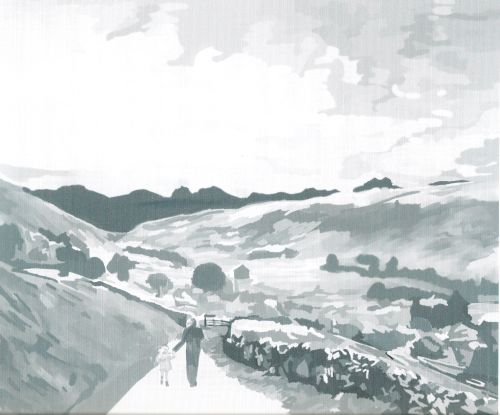
5, Straight in with colour. I use yellows, browns, blues and grays, alternating between half diluted paint and drybrush. I paint in a dark treeline using burnt umber and yellow and fleck dry paint into the white and yellow sunlight.
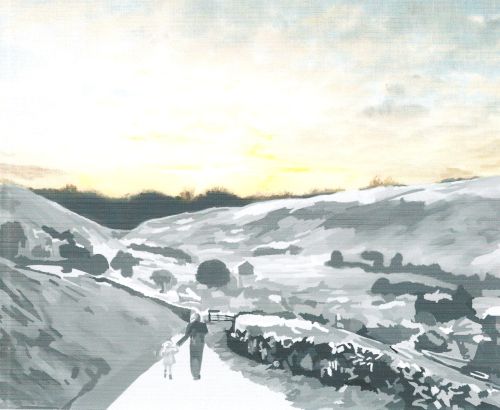
6, Using thick paint I work down the distant hills using slabs and dashes of colour. I use mixes of emerald, cobalt blue, some of the greys I used earlier and plenty of cadmium yellow.
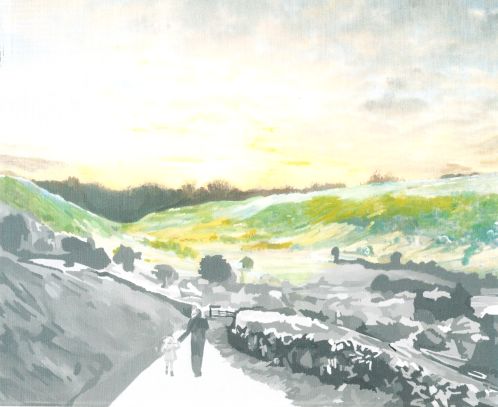
7, The nearer I get to the foreground the more careful I become with each dab. I have a range of earthy colours on my palette and apply them with care, trying not to muddy the colour. The drystone wall is left pretty dark. I use Blue, blue grey and small amounts of emerald and black to add lighter tones and highlights.
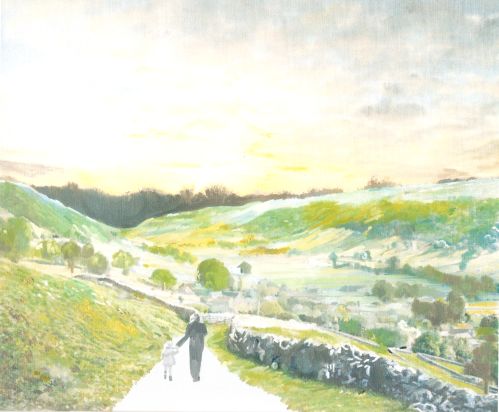
8, I finish the figures, careful to keep them a part of the landscape through the use of muted colour. I use dabs of paint, as I did in step 7, to show a rough pathway where the figures walk.
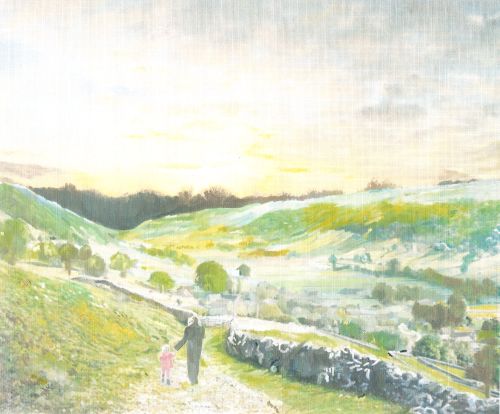
On the whole I am pleased with the effect in my landscape painting in oils. I may tone the background down slightly at a later date but other than that I am happy with it. Try this for yourself. Use colour to draw your scenes without much preparation. You will gain a greater understanding of colour and tone.
Return to Landscape Painting from Landscape Painting In Oils Home
|






